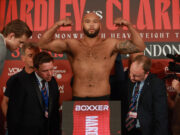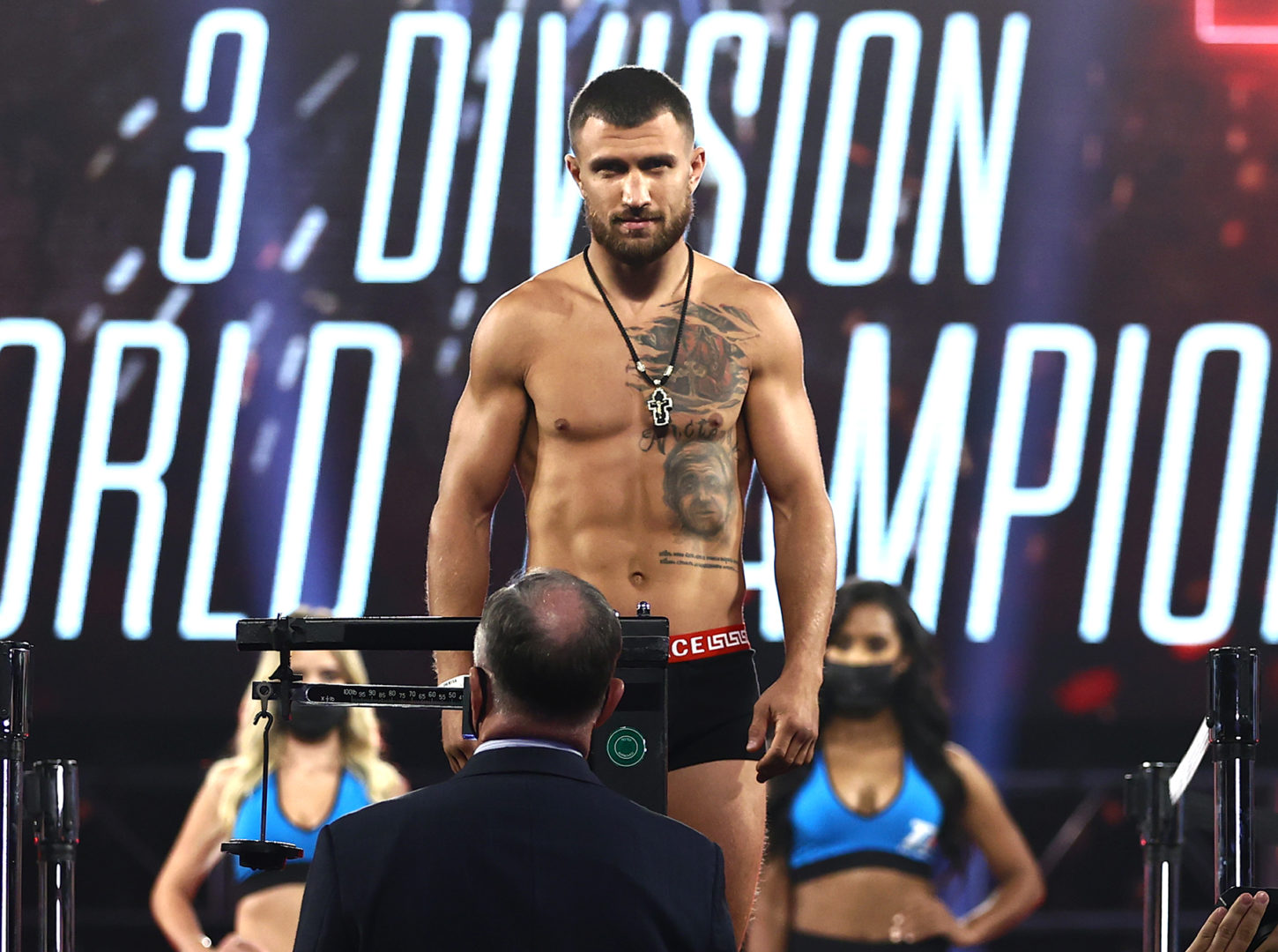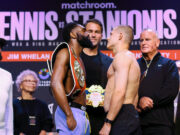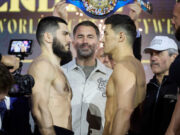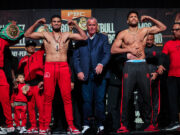By Bart Barry-
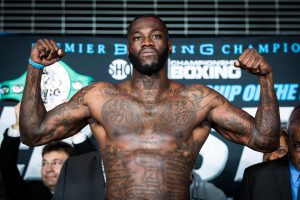
Saturday at Barclays Center in Brooklyn undefeated American heavyweight titlist Deontay “The Bronze Bomber” Wilder windmilled to unconsciousness in round 10 undefeated Cuban heavyweight Luis “King Kong” Ortiz in a spectacle wild and unsightly and violent, and perhaps even unjust, as it was dramatic and suspenseful and thrilling. It does feel cathartic to admit Showtime’s mainevent was wonderful.
I was cheering for Ortiz, I’ll also freely admit, cheering for Ortiz and laughing at Wilder, while quietly conceding how damn intense and entertaining the fight was even while nothing happened. There were whole rounds in the match’s first half when both fighters landed naught yet returned to their corners spent, reminding close observers how fundamentally different heavyweight prizefighting is from all other forms of combat sport.
Wilder and Ortiz more closely resembled two lightweight grizzlybears in a territorial dispute than two lightweight prizefighters. And justice was served on those terms, too – the creature of greater surface area and rage prevailed. There was no need for a roped boundary; neither monster had the wind or whim for a 40-yard flight. They fought like undefeated giants, which was compelling. It was fantastic compelling.
There is probably no end to the offense Wilder will give the sensibilities of boxing purists. He is exactly as bad at boxing as he looks even to the eyes of the chastest casual fans among us. That skyhook fastball righthand thing he threw during his closing scene with Ortiz? It’s not enough to write you can’t Ctrl+F that in the boxing lexicon; you can’t find a surface upon which to practice it safely in any boxing gym the world over: You hit anything less submissive than a speedbag with your hand like that and you break your wrist and tweek your elbow while separating your shoulder.
If there’s method in Wilder’s lunacy it must reside in an effort to disbalance his opponent. Wilder stakes his life on those drowning-man combinations, and when he misses you with his fists and every other part of his arms his overthrowing motion still collides his body with yours, and a man that large moving at that speed can fairly unsettle a Kia, much less another man. The sloppiness of Wilder’s finishes lends a bit of dread to their violence, too, as we’re now told is the design. A Wilder finish is deeply unsettling because experience leaves you unprepared for it. Men that large are never that resentful, that affected, that menacing.
Why would they be?
Wilder has gone and learned how to market himself like a nightmare, which is also compelling. I met him in Tucson after his sixth pro fight and sensed a giant, gentle Southerner, friendly with writers if a touch insecure. Only the giant part remains today, nine years later.
Saturday he made battle with a genuine, if aged, item, and prevailed. Wilder surprised himself. Not in winning – it’s been so long since he was matched competitively, he has no recollection of any alternative ending – but in winning a fight he had a fine chance of losing. Wilder attacked a man who countered him and knew how. It speaks to how dismal Wilder’s competition has been that a 38-year-old southpaw generally missing with counter left crosses chastened the Bronze Bomber effectively as it did, but it did.
I watched the fight with a 78-year-old Mexican aficionado, and we both found Wilder’s approach in round 1 risible enough to laugh in concert at the Alabamian’s peculiar display of footwork and, ahem, “athleticism” in retreat. Wilder, too, sensed what devastation such skittishness might wreak on his brand and didn’t go it again. Credit for that; it showed Wilder is nearly as much a fighter as he is an athlete (after Saturday’s comain showed an all-athlete-no-fighter quit three or four times in his corner before appropriately going thespian in the last televised gasp of his career).
Finally it was conditioning, not craft, that proved the difference. Wilder, the one medalist on USA Boxing’s abysmal 2008 squad, took from that experience and its coaching what little of value there was for the taking – a fetishistic commitment to conditioning (memorably derided by trainer Kenny Weldon: “How long are those rounds, two minutes? I can hold my breath for two minutes!”).
That was how Wilder recuperated so much faster and more completely than Ortiz did. Wilder didn’t need what shenanigans referee David Fields and abetting New York officials tried to pull at the start of round 8, checking Wilder’s pupils for evidence of dilation or something, after Wilder clung to Ortiz like a flotation device in the closing minute of round 7. Wilder’s survival of Ortiz’s attack in the seventh and eighth rounds changed the fight altogether. Wilder recovered much better from Ortiz’s pummeling him than Ortiz did. When the bell rang on round 9, Wilder looked fresh and lucid in a way Ortiz did not. Wilder is a bully, and once Ortiz was unable convincingly to punch the bully in his face, Wilder ran free, freely running all over the blackmat in a signature display of ferocity ungoverned by technique.
And yet. There was nothing unschooled or defective about the right uppercut Wilder sleeped Ortiz with, was there?
It’s time for American aficionados to embrace Wilder as an act of vengeance on the pride Europeans long took in Wladimir Klitschko. In his enormity and power and gracelessness Wilder is a righteous contemporary-American metaphor to the rest of the world. A beneficiary of genetic chance who sees only merit in the mirror Wilder gives Americans our chance to imagine tactical brilliance where Europeans once imagined courageousness in Klitschko.
At least until Wilder someday gets triplestarched by Anthony Joshua at Wembley Stadium.
Bart Barry can be reached via Twitter @bartbarry


